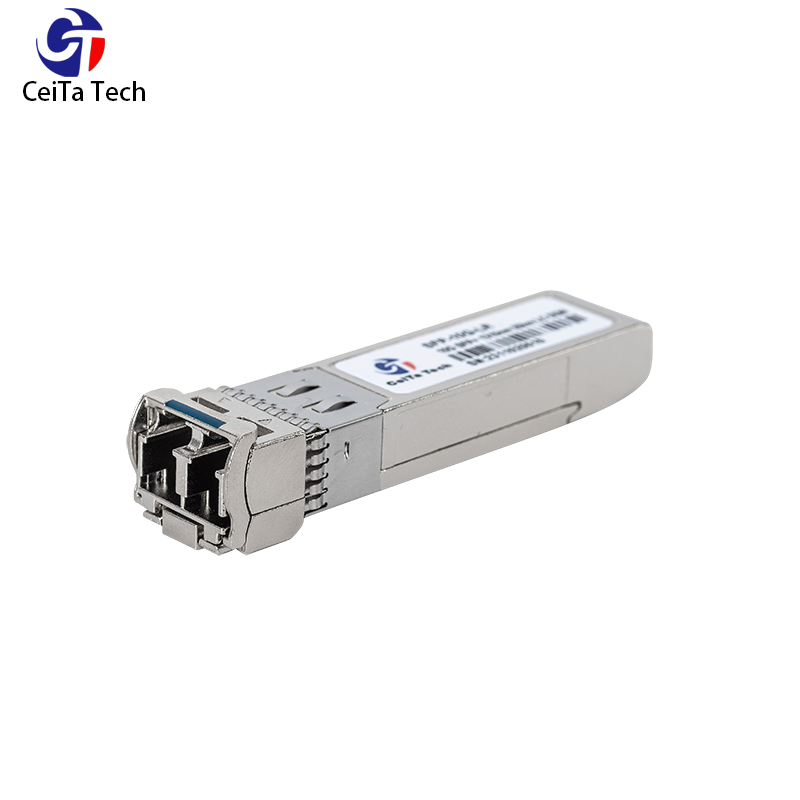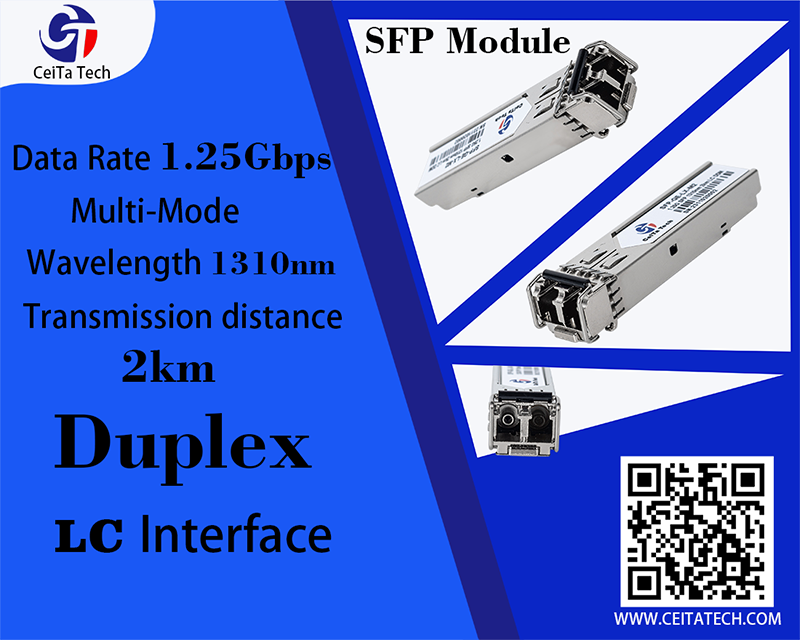The main function of the SFP module is to realize the conversion between electrical signals and optical signals, and to extend the signal transmission distance. This module is hot-swappable and can be inserted or removed without powering off the system, which is very convenient. The main application areas of SFP modules include optical communication applications in telecommunications and data communications, which can connect network equipment such as switches, routers, etc. to motherboards and fiber optic or UTP cables.
SFP modules support multiple communication standards, including SONET, Gigabit Ethernet, Fiber Channel, and others. Its standard has been extended to SFP+, which can support 10.0 Gbit/s transmission rate, including 8 gigabit Fiber Channel and 10GbE (10 Gigabit Ethernet, abbreviated as 10GbE, 10 GigE or 10GE). This module reduces size and power consumption, allowing more than double the number of ports to be configured on the same panel.
In addition, the SFP module also has a single-fiber bidirectional transmission version, namely the BiDi SFP optical module, which can achieve bidirectional transmission through simplex fiber jumpers, which can effectively save fiber cabling costs. This module is based on different IEEE standards and can realize short-distance and long-distance 1G network transmission.
To sum up, the SFP module is an efficient, flexible and hot-swappable optical communication module that plays an important role in the fields of telecommunications and data communications.
Post time: Nov-20-2023










